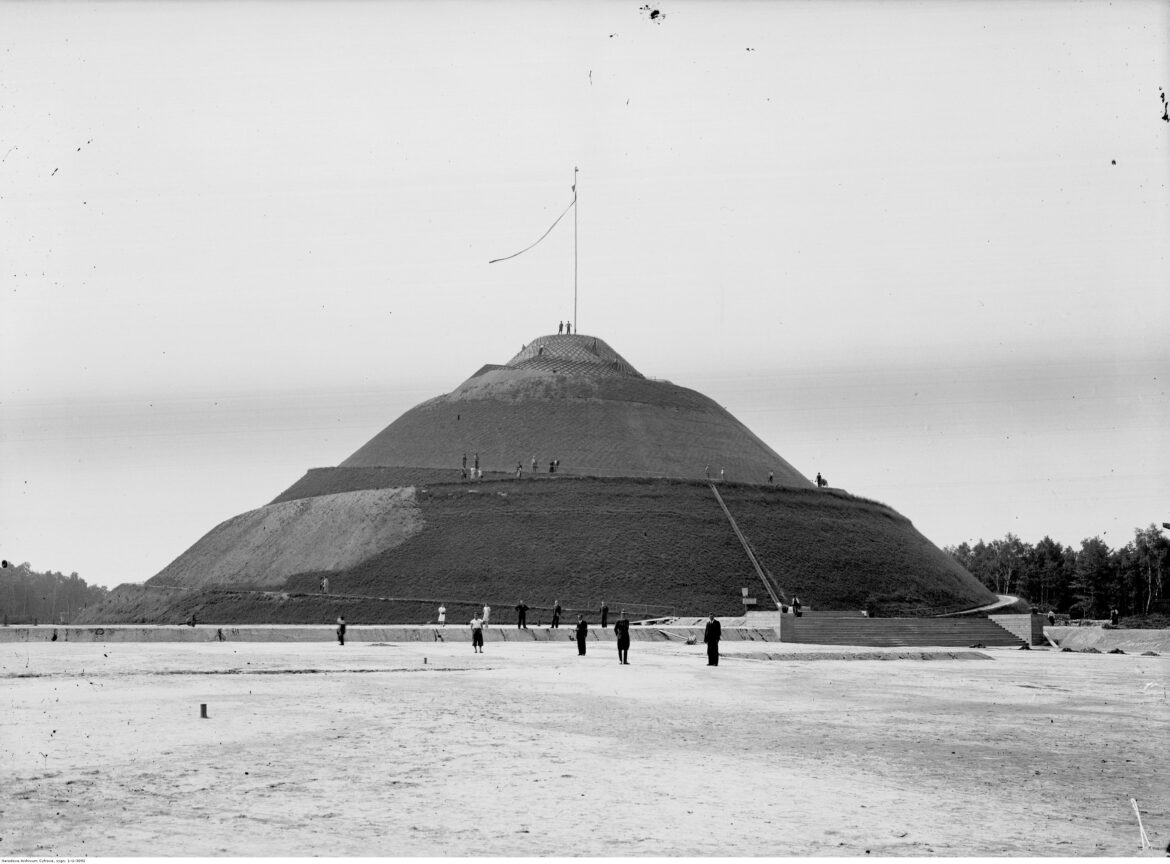Berek Joselewicz was born in Kretinga (formerly Duchy of Samogitia) and died in a skirmish with the Austrians in 1809 near Kock in the Lublin region. Served as a colonel of the Polish army, an officer of the Polish Legions in Italy, a participant in the Kościuszko Uprising, Joselewicz took also part in the Napoleonic wars. Initially, Berek Joselewicz worked as a financial agent and a horse trader for the bishop of Vilnius, Ignacy Jakub Massalski. He sent Berek on a business trip to France during the beginning of the Revolution.
His life and death fascinated many nineteenth-century historians. Joselewicz quickly became a legendary figure, and his memory was revered by many in the Second Polish Republic. The interwar newspapers described annual state ceremonies at his Kock grave, which gathered large crowds as well as the Polish political and military elite, led by Jewish veterans and rabbis.
The celebrations in 1935 had a unique character due to the decision to enrich them with the act of taking soil from Joselewicz’s grave in order to put it in the Mound of Marshal Piłsudski, who died that year.
During the ceremony, a huge portrait of the leader, girded with a black ribbon, was placed next to Joselewicz’s grave. The taken soil was transported in a special urn to Krakow. That symbolic act was previously signed by Emil Czapiński, the President of the Committee in Remembrance of the Jews Fallen for Poland, Commander of the Lublin City Garrison.
In Krakow, the celebrations began on September 5, 1935. They were accompanied by a convention of Jewish veterans from all over Poland who carried the urn with soil to the Mound during the ceremonial march. First, at 9.00 a service was held in the Old Synagogue at Szeroka street then in the Progressive Synagogue at Podbrzezie Street the rabbi of the Polish Army, Major Baruch Szteinberg (born 1897), delivered an occasional sermon. He was murdered in Katyn in 1941.
Many photographers captured the ceremony for history. On the banner held by the honor guard at Berek’s grave, there was an inscription: “Pray for the well-being of the State.”





